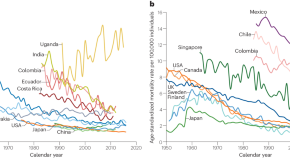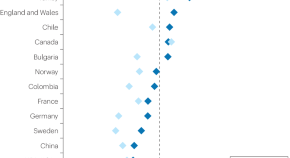Cancer epidemiology (original) (raw)
Reviews and Perspectives
Epidemiology of HPV-associated cancers past, present and future: towards prevention and elimination
Lessons from the prevention of cervical cancer, the first cancer type deemed amenable to elimination, can provide information on strategies to manage other cancers. Infection with human papillomavirus (HPV) causes virtually all cervical cancers and an important proportion of other cancer types. The authors of this Review discuss the epidemiology of HPV-associated cancers and the potential for their elimination, focusing on the cofactors that could have the greatest effect on prevention efforts and health equity.
Global epidemiology of epithelial ovarian cancer
Ovarian cancer, accounting for 4.7% of cancer deaths in women in 2020, remains highly prevalent globally. Nonetheless, owing to changes in environmental exposures, the approach to preventive measures and disease classification, both incidence and mortality have been declining in economically developed countries since the early 2000s. Conversely, parts of Asia and eastern Europe have seen increases in the incidence of ovarian cancer over this period of time. In this Review, the authors summarize the epidemiology of ovarian cancer, including the roles of the various risk factors and the potential for prevention.
- Penelope M. Webb
- Susan J. Jordan

Lung cancer in patients who have never smoked — an emerging disease
Lung cancer is a disease typically associated with tobacco smoking; however, lung cancer in individuals who have never smoked (LCINS) is estimated to be the fifth most common cause of cancer-related deaths globally. Moreover, smoking rates are declining around the world and therefore LCINS is likely to increase as a proportion of all lung cancers over time. Thus, understanding the aetiology and features of LCINS is increasingly important. Herein, the authors review the emerging data on the epidemiology, clinical characteristics and molecular features of LCINS as well as the genetic and environmental risk factors for this disease. They also summarize the unique diagnostic and management paradigms of LCINS.
- Jaclyn LoPiccolo
- Alexander Gusev
- Pasi A. Jänne
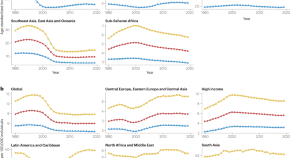
Global trends in hepatocellular carcinoma epidemiology: implications for screening, prevention and therapy
Hepatocellular carcinoma (HCC) is among the most common causes of cancer-related death globally, and despite improvements in prevention and treatment strategies, continued increases in HCC incidence and mortality are predicted. Cirrhosis remains the major risk factor for HCC, although the underlying aetiology is shifting from virus-related to non-viral liver diseases. In this Review, the authors discuss the changing trends in HCC epidemiology and their implications for screening, prevention and therapy, including opportunities to further improve the management of patients with, or at high risk of, HCC.
- Amit G. Singal
- Fasiha Kanwal
- Josep M. Llovet
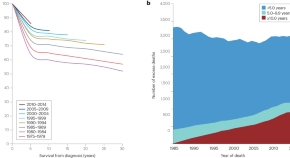
Improving quality and quantity of life for childhood cancer survivors globally in the twenty-first century
Advances in the treatment of childhood cancers have substantially improved cure rates, although the gains in survival are offset by an elevated burden of morbidities and an excess risk of early death owing predominantly to the adverse effects of therapy. In this Review, the authors summarize the evolution of paediatric cancer therapies over the past five decades as well as the associated landscape of treatment-related late and/or long-term health conditions experienced by childhood cancer survivors. In addition, they discuss strategies that are being explored to reduce the overall burden and consequences of these morbidities with the ultimate aim of improving not only the quantity but also the quality of life-years gained for this large, medically vulnerable population.
- Matthew J. Ehrhardt
- Kevin R. Krull
- Melissa M. Hudson
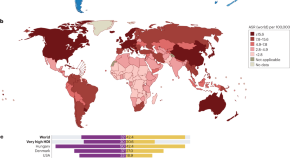
The global burden of lung cancer: current status and future trends
Lung cancer is the commonest cancer globally. Reflecting patterns of smoking and other risk factor exposures, both the incidence of and mortality from lung cancer are highest in economically developed countries. Nonetheless, developing and less economically developed countries are likely to have the biggest increases in lung cancer in the coming years. In this Review, the authors describe the global epidemiology of lung cancer, and how changes in exposures, socioeconomic status, public health interventions and better treatment strategies are influencing both the incidence of and mortality from lung cancer.
- Amanda Leiter
- Rajwanth R. Veluswamy
- Juan P. Wisnivesky
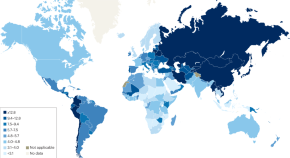
Global burden of gastric cancer: epidemiological trends, risk factors, screening and prevention
Globally, gastric cancer is a common and highly fatal cancer with two anatomical subtypes, non-cardia and cardia gastric cancer. Helicobacter pylori causes almost 90% of distal gastric cancers worldwide. The authors of this Review summarize the current epidemiology of gastric cancer and the evidence and implications of primary and secondary prevention efforts.
- Aaron P. Thrift
- Theresa Nguyen Wenker
- Hashem B. El-Serag
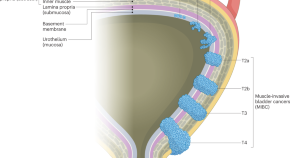
Global trends in the epidemiology of bladder cancer: challenges for public health and clinical practice
Bladder cancer is among the ten most common cancers worldwide and therefore constitutes a substantial health-care burden. This Review summarizes the global trends in bladder cancer incidence and mortality, and describes the main risk factors associated with bladder cancer occurrence and outcomes. The implications, challenges and opportunities of these epidemiological trends for public health and clinical practice are also discussed.
- Lisa M. C. van Hoogstraten
- Alina Vrieling
- Lambertus A. Kiemeney
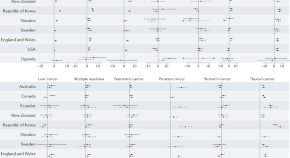
Is early-onset cancer an emerging global epidemic? Current evidence and future implications
The incidence of early-onset forms of many cancers (defined as cancers diagnosed in individuals <50 years of age) has increased in a number of countries over the past several decades. The underlying reasons for this apparent increase probably include greater use of screening programmes, but also changing patterns in early-life exposures. In this Review, the authors describe the emerging global increase in the incidence of early-onset cancers and suggest changes that might address this situation.
- Tomotaka Ugai
- Naoko Sasamoto
- Shuji Ogino
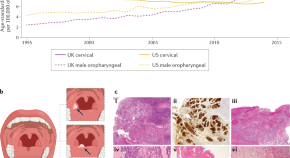
HPV-associated oropharyngeal cancer: epidemiology, molecular biology and clinical management
The incidence of human papillomavirus (HPV)-positive oropharyngeal squamous cell carcinoma (OPSCC) is increasing rapidly in most developed countries. In this Review, the authors provide an overview of the epidemiology, molecular biology and treatment of HPV-positive OPSCC, including discussions of the role of treatment de-escalation and emerging novel therapies.
- Matt Lechner
- Jacklyn Liu
- Tim R. Fenton
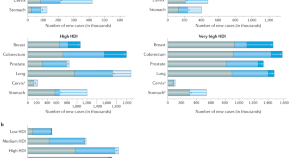
Planning for tomorrow: global cancer incidence and the role of prevention 2020–2070
Assuming that the latest incidence trends continue for the major cancer types, the incidence of all cancers combined will double by 2070 relative to 2020, with the greatest increases predicted in lower-resource settings. The authors of this Perspective discuss how population-level approaches with amenable goals should be considered an integral part of cancer control.
- Isabelle Soerjomataram
- Freddie Bray
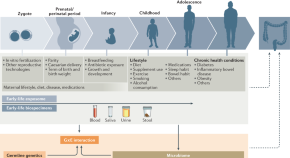
Rising incidence of early-onset colorectal cancer — a call to action
The incidence of early-onset colorectal cancer (CRC) is increasing worldwide for reasons that are currently unclear. Herein, the authors review the current epidemiological, clinical, pathological and molecular understanding of early-onset CRC that occurs in patients ≥50 years of age, drawing contrasts with later-onset CRC. They also discuss future research strategies for improved understanding, prevention, early detection and clinical management of early-onset CRC.
- Naohiko Akimoto
- Tomotaka Ugai
- Shuji Ogino

The changing landscape of cancer in the USA — opportunities for advancing prevention and treatment
Monitoring both cancer incidence and death rates is important for guiding health policy and the direction of future research. In this Perspective, the authors describe changes in cancer incidence and death rates in the USA, highlighting the effects of specific policies and research developments, and providing insight into unmet needs that should be addressed by future health policies.
- Farhad Islami
- Rebecca L. Siegel
- Ahmedin Jemal
